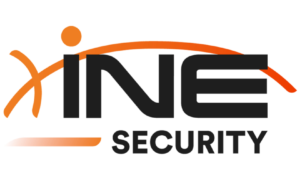Payment Processing Tips by Quamly Corp for Scaling Businesses
In the first half of 2024, Irish PSPs processed 2.3 billion transactions, up 2.6% from late 2023 and 23.7% from early 2023. Scaling your business means reaching new customers while keeping existing processes running smoothly. This usually works well, but as growth accelerates, managing payments can become a challenge, and inefficiencies may start to appear.
So, how do you ensure your payment systems keep up with your scaling business? You optimize payment processing.
When scaling introduces complexities, refining payment processing systems becomes critical to sustaining growth. In this post, Quamly Corp reviews what efficient payment processing looks like, and why it matters, and shares actionable tips to streamline your transactions. And if you’re short on time, skip ahead to the section that catches your eye.
Tip 1: Choose the Right Payment Gateway
Selecting the right payment gateway is essential when scaling your business. A payment gateway serves as the bridge between your business and your customers’ bank accounts, allowing for secure, fast, and reliable transactions. However, not all payment gateways are built the same. Some may offer lower fees but have limitations in terms of features, while others may offer advanced capabilities but come at a premium cost.
For businesses aiming to scale, Quamly Corp recommends choosing a payment gateway that provides comprehensive features, such as multi-currency support, mobile payment capabilities, and easy integration with various e-commerce platforms. This ensures that your business is not only prepared for growth but also ready to expand globally if necessary. A reliable and scalable payment gateway will help you handle increased transaction volumes without compromising customer satisfaction.
Tip 2: Prioritize Security and Compliance
As your business grows, so does the volume of sensitive customer data you handle. Ensuring the security and privacy of this information is paramount, especially when dealing with payment data.
Quamly Corp emphasizes the importance of implementing robust security measures, such as encryption, tokenization, and fraud detection tools, to protect both your customers and your business. Furthermore, adhering to industry standards and regulations, such as PCI DSS (Payment Card Industry Data Security Standard), is crucial for ensuring compliance and maintaining customer trust.
Tip 3: Leverage Automated Payment Solutions
Automating payment processes is a powerful way to improve efficiency as your business scales. Manual payment processing can lead to errors, delays, and administrative burdens that drain resources and hinder growth. By integrating automated payment solutions, businesses can reduce human intervention, streamline workflows, and improve accuracy.
Automated payment processing solutions that simplify tasks such as invoicing, recurring billing, and payment reminders. By leveraging automation, businesses can focus more on strategic growth initiatives and less on day-to-day payment tasks. Automated systems also enable faster transaction processing, which improves cash flow and customer satisfaction.
Tip 4: Optimize Mobile Payment Systems
With the rise of smartphones, mobile payments have become a critical component of any successful payment processing strategy. As more consumers opt to make purchases using their mobile devices, businesses must ensure that their payment systems are optimized for mobile transactions.
Quamly Corp advocates for mobile-friendly payment solutions that provide customers with a seamless and secure experience, whether they’re shopping on your website or making a purchase via a mobile app. Offering multiple payment methods, including digital wallets (such as Apple Pay and Google Pay), is essential for staying competitive in today’s mobile-first world. Mobile optimization ensures your business can capture sales from customers who prefer the convenience of paying with their phones.
Tip 5: Monitor and Analyze Payment Data
Tracking and analyzing payment data can provide valuable insights into your business’s performance. By monitoring transaction trends, payment success rates, and customer preferences, you can identify areas for improvement and make data-driven decisions to optimize your payment processes.
Advanced reporting tools help businesses access real-time payment data, allowing them to track key metrics such as transaction volume, customer demographics, and payment trends. These insights enable businesses to adjust their strategies, whether that means offering new payment options, improving customer service, or enhancing security measures.
Tip 6: Ensure Scalable Payment Infrastructure
As your business grows, it’s important to have a payment infrastructure that can handle increased volumes without slowing down. Scalable payment systems allow businesses to grow without facing bottlenecks or performance issues during peak transaction periods.
Choose payment processing solutions with built-in scalability. A scalable solution not only improves efficiency but also supports future expansion as your needs evolve.
Tip 7: Focus on Customer Experience
The payment experience plays a significant role in customer satisfaction. A seamless, fast, and intuitive payment process can enhance the overall customer journey and encourage repeat business. Customers are more likely to abandon their shopping cart if they encounter friction during the checkout process, which can lead to lost revenue.
Prioritize user experience by offering easy-to-navigate interfaces, multiple payment options, and a smooth checkout process. Providing a positive payment experience builds customer loyalty, which is crucial for long-term business growth.
Tip 8: Integrate with Accounting and ERP Systems
For businesses that are scaling, it’s essential to integrate payment processing with accounting and enterprise resource planning (ERP) systems. Integration allows for smoother workflows, reduces manual data entry, and ensures that financial records are accurate and up to date.
Opt for payment solutions that are designed to integrate seamlessly with leading accounting and ERP software. Integration also reduces the risk of errors and ensures that your financial data is consistent, which is critical for making informed decisions as you scale.
Tip 9: Keep Payment Fees in Check
As businesses grow, so too do transaction fees. While payment processors charge fees for every transaction, these fees can quickly add up and eat into your profit margins. It’s important for businesses to regularly review their payment processing costs and explore options to reduce fees. By negotiating fees based on transaction volume or exploring alternative payment processing models, businesses can reduce expenses and improve profitability as they scale.
Quamly Corp’s Final Thoughts
Payment processing can get more complex as your business grows, but that doesn’t mean it has to slow you down. Instead, focus on building a system that’s secure, scalable, and tailored to your needs. Quamly Corp advises prioritizing a seamless experience, which will set your business up for smoother operations and long-term success.




































